2009 Yamaha Phazer MTX Review

For powder play or boondocking, Yamaha’s Phazer MTX offers great value
Since Yamaha only offers liquid-cooled 4-strokes in its model line up for 2009, the Japanese snowmobile manufacturer uses its Phazer line to compete in areas where cost is key. As we’ve discovered, Yamaha effectively slots its lightweight 4-stroke in against some serious competition. While the Phazer may not be the least expensive for those who shop price only, it frequently offsets its often slightly higher price with value received.
Engine Type:Parallel Twin
Cylinders:2
Engine Stroke:4-Stroke
Valve Configuration:OHV
Displacement:499 / 30.4
Starter:Electric
Turbocharged:No
View Full SpecIf you are a beginning powder rider or a veteran boondocker looking for a sled that gives you great value and a high smiles-per-gallon factor, you should stop in at your local Yamaha dealership and inquire about the 2009 Yamaha Phazer MTX. Don’t be put off by its orange and black, elongated bug-like appearance, this Yamaha provides exceptional value.
High Revving Twin
The nifty 499cc high-revving 4-stroke powerplant delivers 80 horsepower at revs high enough that Yamaha engineers had to borrow the gear-reduction concept used in the 4-cylinder Apex to get engine revs to clutchable levels. The Phazer’s 500cc twin is essentially two high-performance YZ250F motocross-type engines joined together with revs easily exceeding 11,000. That means gear reduction has to get final output into an 8,000-plus rpm range where they can work most efficiently with Yamaha’s clutch system.
A staple in the Yamaha off-road motorcycle line, the engine features five titanium valves to help the 250cc 4-stroke breathe. The snowmobile engine isn’t quite as wild as the bike version, but it too features five valves per head, computer controlled fuel injection, and a counterbalanced crankshaft to keep vibration under control.
The engine tucks out of the way under the rider in Yamaha’s rider-forward chassis design. Fortunately the Yamaha twin is reliable and durable, because accessing the motor is a gigantic pain that requires removal of the seat and various panels.
A long time ago, a Yamaha engineer told us that the engineering goal of most sled makers was to keep consumers from fiddling with the power components and that “some day” all snowmobile engines would be designed so consumers wouldn’t be able to tinker with them. Looks like he was right and that “some day” has arrived.
Engine Highlights
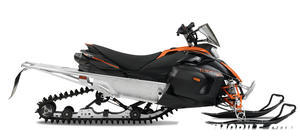 The Phazer MTX uses A-arm front suspension and new ProMountain 144 rear unit.
The Phazer MTX uses A-arm front suspension and new ProMountain 144 rear unit.
The engine’s intake comes from an electronic fuel injection system that sucks fuel via twin Keihin 43mm throttle bodies. That’s a hefty intake for a cylinder that measures under 250cc.
As with all Yamaha 4-strokes, the Phazer exhaust points to the rear and runs under the seat, a patented feature that gives Yamaha added clearance under the hood, quickly removes exhaust heat from the engine compartment, creates an efficient cross flow from intake to exhaust, and helps create balance with the overall sled package. The weight of the engine sits behind the skis and the weight of the exhaust system runs down the sled’s spine.
If you are one of those snowmobilers who goes into a dealership and grabs the rear bumper for a ‘clean and jerk’ move, you’ll have noticed that Yamahas in general have more weight toward the rear than many competitive models. It’s not necessarily because Yamahas are heavier, it is because Yamaha tends to distribute sled weight more evenly from front to rear. Of course, with its 146-inch track and extended chassis, the Phazer MTX will be heavier at the rear grab bar anyway.
Power To Weight
The 80 hp Genesis twin has to move 515 pounds, which amounts to almost 6.5 pounds per horsepower. If you are looking at competitively priced long tracked play sleds, the Phazer carries a pound less per pony than the budget-priced, fan-cooled long trackers from Ski-Doo and Polaris, which weigh 459 lbs and 464 lbs respectively. Both of those sleds are about US$1,500 less than the Phazer MTX.
If you look at Polaris’ Shift 144, you’ll find that US$500 more buys you almost 50 less pounds and a 600cc two-stroke with 40 more horsepower. Ski-Doo’s Everest 600 will be about US$150 less expensive than the Polaris and 90 pounds lighter than the Phazer MTX. All of those models are powered by two-stroke engines and don’t share the sophistication of Yamaha’s modern 4-stroke twin.
Expectations
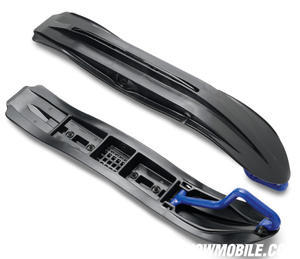 Wide and lightweight plastic skis aid flotation in powder.
Wide and lightweight plastic skis aid flotation in powder.
Truthfully we had low expectations the first time we rode the long-track powder Phazer, which was originally known as the Phazer Mountain Lite. While the sled’s evolution has been gradual since that 2007 version, the current 2009 Phazer MTX remains a guilty pleasure for those of use who like to poke around on ungroomed forest roads and break trail across remote lakes. We have found that the Phazer MTX is a great sled to be on if you are learning to ride powder. It puts a healthy 14-inch wide by 144-inch footprint on the snow. The Phazer’s Camoplast Maverick track features 2-inch lugs for grip. Of course, this track combination detracts from the sled’s top speed when compared to a standard Phazer. The final drive reflects gearing best suited for slogging through powder. What has surprised us about the Phazer MTX is its ability to “torque” its way up hills and through deep snows. While it seems to putter along, the sled’s nimble feel gives you confidence that you can ride out of a deeper than expected draw.
Suspensions
The Maverick track spins around Yamaha’s ProMountain 144 rear suspension. This second generation Phazer powder skidframe was designed to fit the 14-inch width of the track. You’ll note that the wheels that support the track on the rear upper cross shaft have been enlarged to reduce friction. The suspension delivers 14.3 inches of travel that is controlled via KYB high-pressure shocks.
The front A-arm suspension delivers upwards of 8.7 inches of travel with high-pressure gas shocks to control movement. The plastic skis offer lightweight, non-sticking performance compared to steel.
For 2009 the Phazer MTX tunnel features removal of the former snow panels as the rear slot on the tunnel is completely closed off to reduce the amount of snow and ice building up on the tunnel and runningboard area.
The rider-forward position works extremely well for powder running. The handlebar sits tall and the runningboards are wide. The narrow seat allows easy movement for tipping from side to side.
Overall the 2009 Phazer MTX is evolutionary as it features a revised suspension and improvements in shocks. As we’ve come to expect from Yamaha, there are the expected features like electric start, dual piston hydraulic brake and information laden digital gauge with warning lights, fuel level, hand warmer levels, and trip meter data. For ease of off-loading your trailer, there’s an electric shift for reverse.
The 2009 Phazer MTX is certainly not the lowest priced powder play sled, but when you compare what you get for the money, it is a very good value.
| 2009 Yamaha Phazer MTX Specs | |
| Engine | Yamaha Genesis 80FI; 499cc, 2-cylinder, 4-stroke, liquid-cooled; 43mm Keihin throttle body electronically controlled fuel injection |
| Horsepower | 80 |
| Drive | Yamaha YXRC |
| Front Suspension | Yamaha wishbone; 8.7-in travel; high pressure gas shocks |
| Rear Suspension | Yamaha ProMountain 144; 14.3-in travel; KYB high pressure gas shocks |
| Length | 125.7 in |
| Width | 46.8 in |
| Height | 45.8 in |
| Ski Stance | Adjustable from 37.6 to 39.6 in |
| Track | 14 x 144 2.0 Camoplast Maverick |
| Weight | 515 |
| Fuel Capacity | 7.0 US Gal |
| MSRP | $7,499 |
Related Reading:
2009 Yamaha Phazer RTX Review
2009 Yamaha Nytro RTX SE Review
2009 Yamaha Vector LTX GT Review



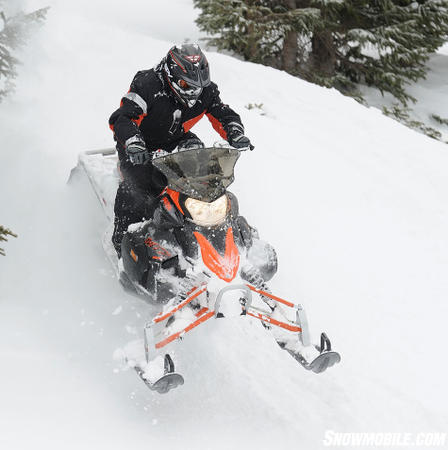
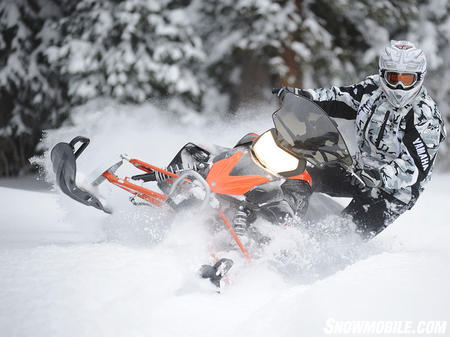
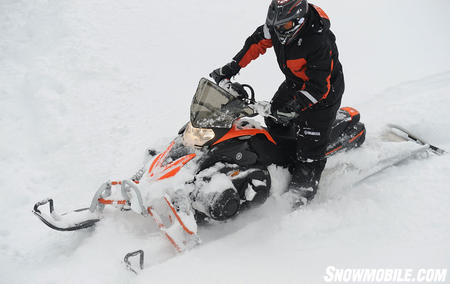





 Your Privacy Choices
Your Privacy Choices